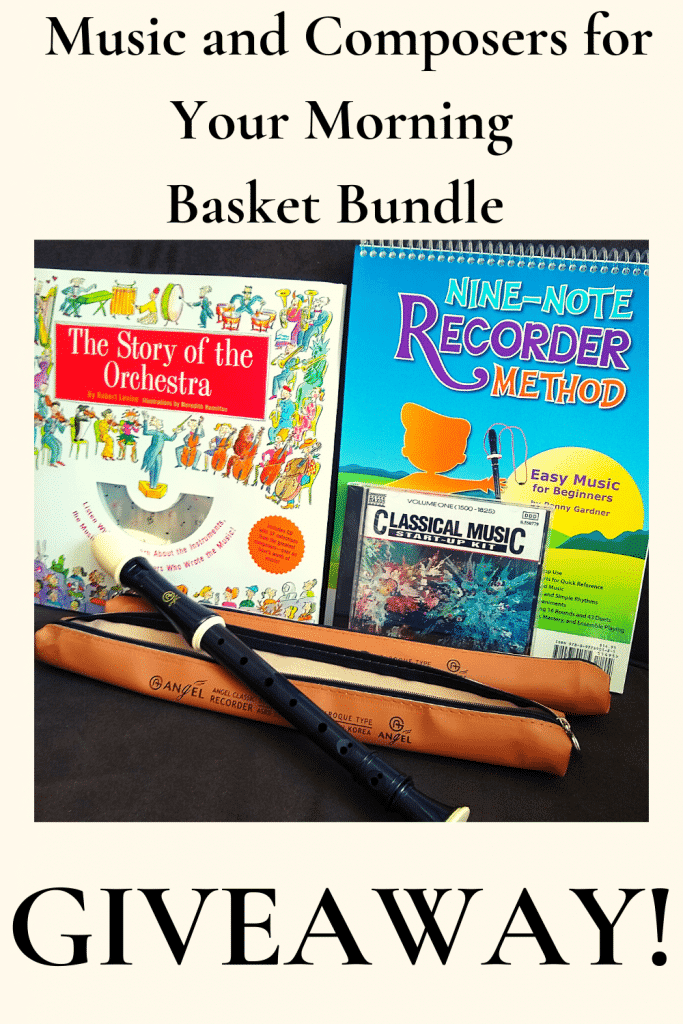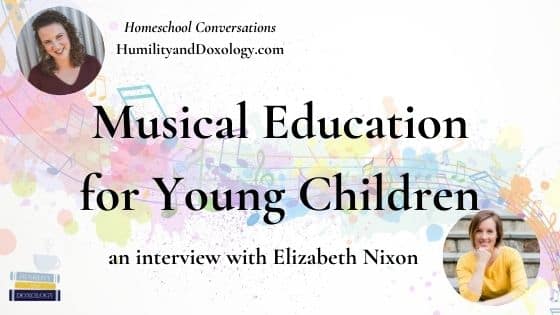Many of us want to provide our children with a musical education. We want our children to appreciate the music written by others, to understand how to read notes, and maybe even to learn how to play an instrument themselves. Unfortunately, the daily grind of the basics often seems to crowd out any space for music appreciation time in our homeschool.

{I received free products in exchange for writing this blog post. Please see disclaimer.}
Here are 3 easy ways to incorporate music in your homeschool:
Integrate Music with Other Subjects
Instead of viewing music appreciation as One More Thing on your to-do list, look for ways to incorporate music with the subjects you’re already studying!
What are you studying in history? It’s easy and fun to integrate music history into your curriculum plan. For instance, if you’re studying the modern era, that’s a perfect time to explore the music of composers like Joplin, Ravel, Bartok, and Stravinsky.
Are you studying a particular country or region for geography? Why not pick out some biographies of that country’s composers to read aloud, or play music from that region while you color and label a map!
Do you have a child who loves acting in musicals or plays? Why not take advantage of their love of drama and dig a little deeper into the lives of the theatrical composers like Leonard Bernstein or John Williams!
Our family loves to use the Musical Era bundle from SQUILT to coordinate with our history studies. It covers composers from the Baroque, Classical, Romantic, and Modern eras (which would easily coordinate with any history lessons from 1600 to the present). With its simple, open-and-go format, it’s easy to add into our weekly homeschool routine.
Learn Note Reading at Home
Being able to read music is such an important life skill, but unfortunately it is one that many never learn. Taking formal music lessons is one way to develop sight reading skills, but for many families, budgetary and time constraints mean their children aren’t able to take instrument instruction outside the home.
During our family devotions, we love to sing Psalms and hymns. Understanding basic musical concepts like rhythm (the length and patterns of music), intervals (the space between notes), and how to identify notes on the staff is invaluable when we’re learning a new tune!
But what if you don’t have a piano or a background in music? Can you still teach your children how to read music? It is easy to learn note reading at home with simple instruments like a recorder.
The recorder is one of the most inexpensive and easily accessible instruments you can find. It’s also small and easy to store, a huge benefit for homeschool families with limited space.

Even if you don’t have a musical background yourself, simple instructional books can walk you step-by-step through the process of learning basic rhythm and note reading techniques.
My daughters are currently taking piano lessons, but I wanted them to also learn how to play an instrument that was a little easier to carry around. Sophia and Grace loved including recorder time in our Morning Basket last school year! One surprising side benefit I noticed was that playing recorder forced them to develop better concentration and fine motor skills.
Connect with Music during Morning Time
Morning Time is one of my favorite parts of the homeschool day. With the wide range of ages and personalities in our family, Morning Time provides opportunities to develop a shared family culture, memories, and relationships.
Music appreciation is a perfect element to include in your Morning Basket! A beautiful piece of music can be enjoyed at any age. And who doesn’t love learning more about the instruments in the orchestra?

It is a great joy to my heart when one of my children hears a piece of classical music on our local classical radio station and notices that it’s one we’ve explored in our homeschool! Much the same way that our poetry or Scripture memory work sink in and become a part of us, the music that we explore during Morning Time becomes part of the inner museum of our hearts.
I mentioned above how the SQUILT musical era bundle easily fits into our homeschool day. Last spring, I also added in read alouds from The Story of the Orchestra. The colorful page spreads were just the right length for our Morning Time, and the accompanying CD music tracks were fun (and short) enough to keep everyone’s attention.
Our family enjoys attending live orchestra performances whenever possible, and having a basic understanding of the instrument families of the orchestra helps my children be more engaged in the music.
What are some easy ways you can include music in your homeschool this year?
Connect with Music:
Music and Composers for Your Morning Basket Bundle and Giveaway
It’s Sonlight’s 30th anniversary, and they’re inviting us to celebrate with them! Enter to win a new giveaway every week through September 29, 2020.
This week’s giveaway is the Music and Composers for Your Morning Basket Bundle! Be sure to enter by Tuesday, July 28, 2020 for your chance to win.
We homeschool because we want time for the extras, but then we sometimes forget to incorporate them! This music kit provides a starting point for making music and composer study a part of each day. Rotate these resources through your morning basket for musical homeschool fun.
Products included in the music bundle giveaway:







